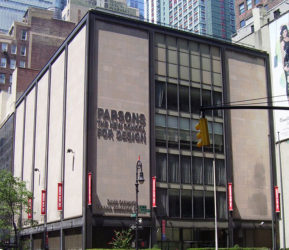When most people in the Caribbean think about fashion as a potential career, the only job titles they tend to associate it with are seamstress, fashion designer or model. This is a clear sign that there is very poor career guidance and mentorship available to help young people make the best choices and to fit their skills appropriately to the industry. This is probably why the industry is extremely  stagnated; it is supported by a weak inappropriate skill mix. To put the skills gap into perspective, let me use my place within the industry as an example. Last year I visited Trinidad to review the designer thesis show for students at the Caribbean Academy of Fashion and Design (CAFD). It is now a year later and guess what? For this year’s show—I was unavoidably absent—not a single analytical review has managed to surface.
stagnated; it is supported by a weak inappropriate skill mix. To put the skills gap into perspective, let me use my place within the industry as an example. Last year I visited Trinidad to review the designer thesis show for students at the Caribbean Academy of Fashion and Design (CAFD). It is now a year later and guess what? For this year’s show—I was unavoidably absent—not a single analytical review has managed to surface.
This revelation is not my plea for praise but more a wakeup call about the sad reality of the place where we want to create an industry.
While a fashion designer might be the brain behind the ‘beauty’ of a collection he or she isn’t the only needed figure to make the wheels turn. Designers, like any other manufacturer, produce products and in some cases services. There is no reason why designing shouldn’t have the proper functioning business and marketing factors incorporated into its protocol and structure. There is no reason why the designer or brand shouldn’t invest in making sure the products are packaged and advertised properly. After all, they are trying to sell something to you!

A sad reality of the ‘industry’ is that it lacks the experience of appropriately qualified players. For an industry to truly be functional, relevant stakeholders not only need to have access to funding to support their businesses and brands, but the right talent to help them sell their merchandise. Fashion merchandisers, digital fashion merchandisers, stylists, pattern cutters, fashion journalists and so on, all play an integral role in how the industry moves forward and grows.
I guess some of my frustration lies in the fact that CAFD has not woken up to this reality, though it happens to be the only ‘fashion school’ in the Caribbean region. Never mind that CAFD only offers two fashion programmes and that the quality of those programmes have depreciated over the years as budget cuts prevailed.
A proper accounting of the industry is necessary so as to inform stakeholders of its true momentum in order for appropriate discourse to take place, which will in turn lead to improved development. You wouldn’t ask an auto mechanic to make a wedding cake, would you? In the very same way, appropriate skills and education are required to contribute and develop the fashion industry.
I recently came across an article on STRUCKTURETHEBLOG, a Guyanese fashion blog spearheaded by local modelling agency Traits. The article, titled ‘Screaming Babies,’ was a review of a fashion show during the Jubilee activities.
The writer also lamented the fact that brands and designers are not using the business environment and marketing strategies to facilitate the consumer. The writer had this to say:
“Half of the designers that showcased their work at the fashion show I searched on social media for and couldn’t find anything. What if I was a tourist at your show and I wanted to purchase a piece? How would I be able to contact you? Do you have a website? How are you advertising your stuff?”
We must try to understand that fashion is a real business and a very real industry. It deserves a holistic management approach, attention and dedication like any other business. It requires a variance of skills which need to not only be recognized by CAFD but also the current players. Like every other industry, it cannot be accomplished through a one-man approach.
https://twitter.com/theonlinerunway
http://instagram.com/theonlinerunway





